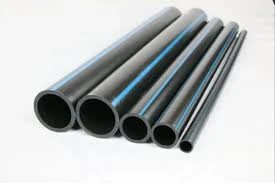Nov . 24, 2024 22:58 Back to list
hdpe spec sheet
Understanding HDPE Specifications and Applications
High-Density Polyethylene (HDPE) is one of the most widely used types of plastic globally, known for its versatility, durability, and environmental resistance. As a thermoplastic polymer made from the polymerization of ethylene, HDPE has characteristics that make it suitable for a variety of applications, ranging from packaging to construction materials. In this article, we will delve into the specifications, properties, and various applications of HDPE, clarifying its integral role in modern industries.
Chemical Structure and Properties
HDPE is characterized by its high density, which results from its molecular structure. The polymer consists of linear chains with minimal branching, allowing for close packing of the molecules. This configuration grants HDPE its notable strength and rigidity.
The specifications of HDPE include
- Density Typically between 0.94 to 0.97 g/cm³. - Melting Point Usually ranges from 120°C to 130°C. - Tensile Strength Approximately 26 to 37 MPa, making it robust enough for various uses. - Flexural Modulus Typically around 800 to 1,200 MPa. - Impact Resistance Excellent, especially at lower temperatures, making it a preferred choice in colder environments.
These mechanical properties contribute to HDPE's reputation as a durable material, suitable for long-term use in many demanding applications.
Environmental Resistance
One of the standout attributes of HDPE is its resistance to chemicals and UV radiation. It does not react with most solvents, acids, and bases, making it ideal for use in chemical containers and storage applications. In addition, the material’s resistance to UV radiation ensures that products made from HDPE maintain their integrity when exposed to sunlight, making it suitable for outdoor applications.
Applications of HDPE
HDPE's properties enable its use across a wide range of industries
hdpe spec sheet

1. Packaging HDPE is commonly used for manufacturing bottles, containers, and bags. The material's strength and flexibility allow for various designs, including lightweight options that do not compromise on durability.
2. Construction In construction, HDPE is used for piping systems, geomembranes, and plastic lumber. Its ability to withstand substantial pressure makes it perfect for water supply pipes and sewage systems.
3. Automotive HDPE components are also utilized in the automotive sector for fuel tanks, interior panels, and other parts where lightweight and resilience are beneficial.
4. Consumer Goods Many household items, such as toys, storage bins, and kitchenware, are made from HDPE, thanks to its safety and durability.
5. Agriculture The agricultural industry uses HDPE for irrigation tubing, containers, and even for making greenhouse structures due to its weather resistance and longevity.
Recycling and Sustainability
With increasing environmental concerns, recycling has become a crucial aspect of HDPE’s lifecycle. HDPE is one of the most recyclable plastics, with a recycling code of 2. The recycling process involves collection, sorting, shredding, and reprocessing the material, allowing it to be transformed into new products while reducing the amount of plastic waste in landfills.
Sustainable practices in HDPE production also include the adoption of bio-based feedstocks and advancements in manufacturing processes that lower energy consumption. Companies are increasingly focused on creating a circular economy for plastics, emphasizing the importance of reusing materials and reducing overall environmental impact.
Conclusion
High-Density Polyethylene is a remarkable material with a wide array of applications due to its superior properties and adaptability. Its specifications highlight its strength, chemical resistance, and suitability for various uses, from consumer products to critical infrastructure. As sustainability continues to be a focal point globally, the recycling and innovative uses of HDPE will play a significant role in promoting environmental responsibility within the plastics industry. Understanding the specifications and applications of HDPE is essential for industries aiming for efficiency, sustainability, and longevity in their product offerings.
-
Premium PVC Soft Sheets: Clear, Flexible & Durable
NewsAug.12,2025
-
Premium PVC Round Rods: Durable, Chemical Resistant, Easy to Machine
NewsAug.11,2025
-
PP U-channel: Chemical-Resistant, Lightweight & Durable
NewsAug.10,2025
-
Transparent PVC Pipe: Clear Flexible Tubing for Fluids
NewsAug.09,2025
-
Durable PP Rigid Sheet: Versatile & High-Quality Plastic Panels
NewsAug.08,2025
-
Premium Glossy PP Rigid Sheet – Durable & Versatile
NewsAug.07,2025

